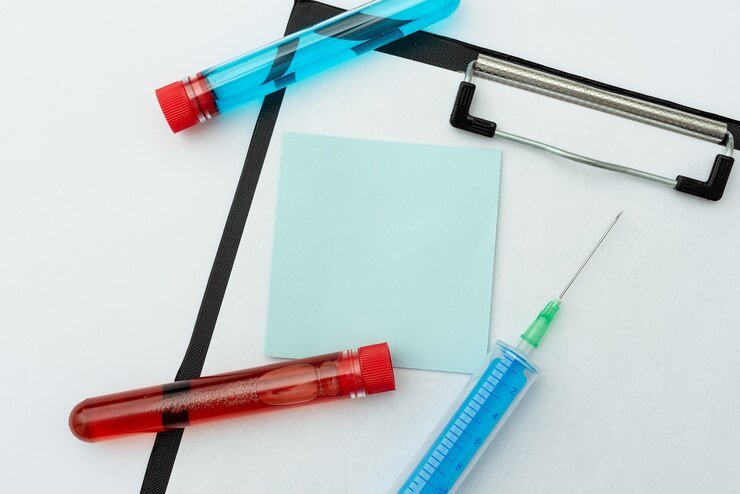The Intersection of AI Art, Horror, and IV Needles
Imagine a world where artificial intelligence not only drives our cars and manages our schedules but also creates art that evokes the deepest of human emotions. Enter the realm of AI-generated horror art, where technology intersects with the macabre to produce chilling works featuring motifs like IV needles. This fusion of creativity and fear is not just an artistic endeavor; it’s a commentary on society’s anxieties and the evolving role of technology in our lives.
In this blog post, we will explore how AI has influenced the art world, particularly in the genre of horror, and how IV needles have become a haunting symbol within this niche. From the evolution of AI in art to its impact on society, we will take a deep dive into this fascinating intersection.
The Evolution of AI in the Art World
From Creation to Interpretation
Artificial intelligence has come a long way from its early days of simple pattern recognition. Today, AI algorithms can create complex and emotionally resonant pieces of art. Initially, AI was primarily used for generating abstract and non-representational art. However, as technology advanced, so did the capabilities of these algorithms. Now, AI can analyze existing works of art, learn from them, and create new pieces that are not only original but also rich in context and meaning.
The shift from merely generating patterns to creating interpretive art has been groundbreaking. AI can now understand and replicate different artistic styles, from Renaissance to modernism, and even venture into more niche genres like horror. This evolution has opened up new avenues for artists and technologists alike, allowing for a collaborative effort that pushes the boundaries of what art can be.
AI and Emotional Resonance
One of the most intriguing aspects of AI art is its ability to evoke emotions. Traditional art relies on the artist’s skill and emotional intelligence to create pieces that resonate with viewers. AI, on the other hand, uses data and algorithms to achieve a similar effect. By analyzing human reactions to various forms of art, AI can fine-tune its creations to evoke specific emotions, whether it’s joy, sadness, or in the case of horror art—fear.
The Role of Data
Data plays a crucial role in the creation of AI art. Algorithms are trained on vast datasets of existing artworks, allowing them to understand different styles, techniques, and themes. This data-driven approach enables AI to produce art that is not only visually appealing but also contextually rich. In the realm of horror, this means creating pieces that tap into deep-seated fears and anxieties, using symbols like IV needles to add layers of meaning and terror.
AI Art and Its Influence on Horror
A Deep Dive Into the Genre
Horror as a genre has always thrived on its ability to evoke fear and discomfort. From classic literature to modern cinema, horror has evolved to reflect societal anxieties. AI art brings a new dimension to this genre, offering a fresh perspective on what it means to create fear-inducing imagery. By leveraging AI, artists can explore new themes and motifs, pushing the boundaries of horror art.
The Unique Appeal of AI-Generated Horror
The appeal of AI-generated horror art lies in its unpredictability. Traditional horror artists rely on their imagination and experiences to create disturbing imagery. AI, however, brings an element of the unknown. Algorithms can generate art that is eerily unique, often surpassing human creativity in its ability to unsettle. This unpredictability adds a layer of intrigue and fascination, making AI-generated horror art a compelling subject for both creators and viewers.
The Role of IV Needles in Horror Art
IV needles have long been a symbol of medical anxiety and vulnerability. In horror art, they serve as a powerful motif, representing fear of invasion, loss of control, and pain. When combined with AI-generated imagery, IV needles take on a new level of symbolism. They become not just a tool of medical intervention but a representation of deeper fears related to technology, autonomy, and mortality.
The Use of IV Needles as a Symbol in Horror
Historical Context
The use of IV needles in horror is not a new phenomenon. Historically, medical instruments have been a staple in horror narratives, symbolizing the thin line between life and death. IV needles, in particular, evoke a sense of helplessness and dependency, making them a potent symbol in horror art. Their inclusion in AI-generated art adds a layer of depth, as it combines the fear of medical procedures with the unpredictability of technology.
Artistic Interpretation
In the hands of AI, IV needles can be more than just a medical tool. They become a canvas for exploring themes of vulnerability, pain, and loss of control. AI algorithms can create surreal and haunting images that use IV needles as central motifs, blending them with other elements to create a cohesive and unsettling narrative. This artistic interpretation allows for a nuanced exploration of fear and anxiety, making the art more impactful.
Real-World Examples
Several AI-generated horror art pieces have effectively used IV needles to evoke strong emotional responses. For instance, an AI-generated artwork might depict a figure entangled in IV lines, with the needles representing not just medical intervention but a loss of autonomy and control. These images tap into primal fears, making them incredibly effective in the horror genre.
Case Studies and Examples of AI-Generated Horror Art
Groundbreaking Works
One notable example of AI-generated horror art is a piece that combines elements of classic horror with modern anxieties. The artwork, created using a generative adversarial network (GAN), features a haunting image of a figure surrounded by IV needles. The AI algorithm was trained on a dataset of horror images and medical illustrations, resulting in a piece that is both visually striking and deeply unsettling.
The Process Behind the Art
The creation of AI-generated horror art involves several steps. First, a dataset of relevant images is compiled. This dataset can include everything from classic horror art to modern medical illustrations. The AI algorithm is then trained on this dataset, learning the patterns and themes that define the genre. Finally, the AI generates new images, which are refined and curated by human artists to ensure they meet the desired aesthetic and thematic goals.

Impact on the Viewer
The impact of AI-generated horror art on viewers is profound. These pieces tap into deep-seated fears and anxieties, creating a visceral emotional response. The use of IV needles as a motif adds an additional layer of terror, as it evokes fears related to medical procedures and loss of control. This emotional impact makes AI-generated horror art a powerful tool for exploring and understanding the human psyche.
The Impact on Society and the Art World
Societal Implications
The rise of AI-generated art has significant implications for society. On one hand, it democratizes the art-making process, allowing anyone with access to AI tools to create compelling works of art. On the other hand, it raises questions about the role of the artist and the nature of creativity. In the context of horror art, these questions become even more complex, as the genre often deals with themes of identity, autonomy, and human nature.
The Art World’s Response
The art world has been quick to recognize the potential of AI-generated art. Galleries and museums are increasingly showcasing AI-generated pieces, and collectors are starting to take notice. However, there is still some skepticism and resistance, particularly from traditional artists who see AI as a threat to their livelihood. Despite this, the overall trend is towards greater acceptance and integration of AI in the art world.
Predictions for the Future
Looking ahead, it is clear that AI will continue to play a significant role in the art world. As technology advances, AI algorithms will become even more sophisticated, capable of creating increasingly complex and emotionally resonant works of art. In the realm of horror, this means pushing the boundaries of what is possible, exploring new themes and motifs, and creating art that is both terrifying and thought-provoking.
Conclusion
In conclusion, the intersection of AI art, horror, and IV needles is a fascinating and complex subject. AI has the potential to revolutionize the art world, offering new ways to create and interpret art. In the genre of horror, AI-generated art can evoke deep-seated fears and anxieties, using symbols like IV needles to add layers of meaning and terror. As society continues to grapple with the implications of AI, it is clear that this technology will play a crucial role in shaping the future of art.


